In its entire 46-year history, Apple has made only one truly great keyboard: the Apple Extended Keyboard II. Dating from 1987, the Apple Extended Keyboard II has been dubbed “the greatest computer keyboard of all time.“
For me, the Extended Keyboard is the ultimate Goldilocks keyboard: it offers the perfect amount of travel, feel and sound. Alas, it was discontinued in 1994 and Apple hasn’t made a mechanical keyboard — with switches and springs beneath each key — since.
But fear not. The Matias Mini Tactile Pro keyboard is the Extended Keyboard’s spiritual successor: a modern mechanical keyboard in a mini package that plays nice with modern Macs.
But is it any good?
This post contains affiliate links. Cult of Mac may earn a commission when you use our links to buy items.
A short history lesson of Apple mechanical keyboards
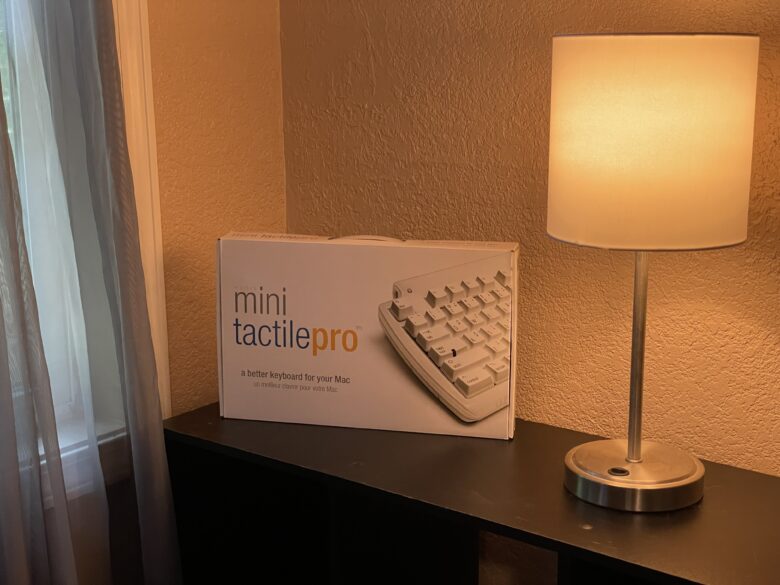
Photo: D. Griffin Jones/Cult of Mac
Keyboard enthusiasts are a small but vocal niche of computer and gaming enthusiasts. Among keyboard enthusiasts, there are several camps that are devout to different legendary keyboards. Your standard-issue PC-gaming keyboard probably uses mechanical switches built by German manufacturer Cherry or a similar knock-off. Other keyboard nuts are devoted to the buckling spring keyboard of the IBM Model M and its modern replicas, which offer an outstanding typing experience.
But those who were Mac guys in the 1990s — all twelve of us — know the Apple Extended Keyboard II to be the best of the best. This beige monster was sold from 1987 to 1994. The Alps switches it used, rare in the keyboard world, are no longer manufactured. I described the typing experience in my series of Mac keyboard reviews as “simply superb.” It was replaced by the mushy and cheap AppleDesign Keyboard, and Apple has never made another mechanical keyboard since. Subsequent designs used rubbery membranes, which offer shallow travel and a rather unpleasant, mushy feel.
This is where third-party manufacturers have stepped in. The Matias Mini Tactile Pro aims to pick up where Apple Extended Keyboard II left off — in a more palatable, less ‘extended’ form factor.
Matias Mini Tactile Pro Keyboard for Mac review
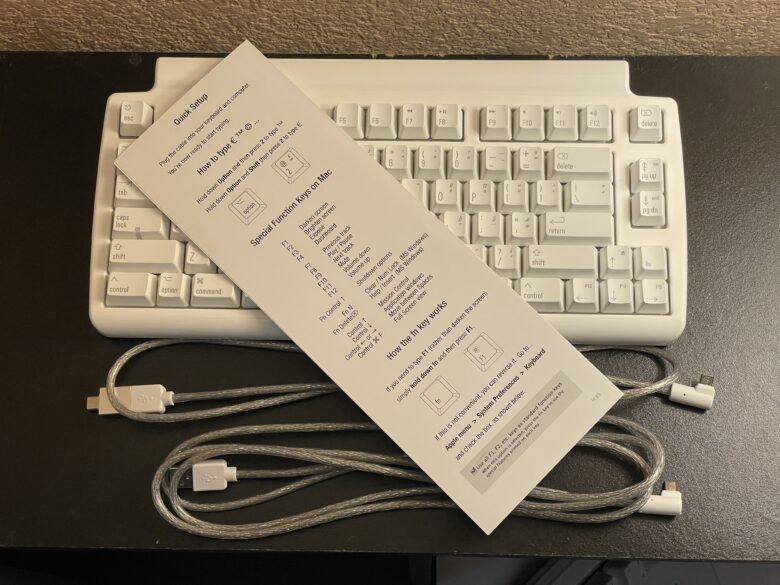
Photo: D. Griffin Jones/Cult of Mac
In the box, you will find the keyboard itself, long and short USB cables and a USB-A to USB-C adapter. The adapter is a nice touch for newer MacBooks.
Look and feel
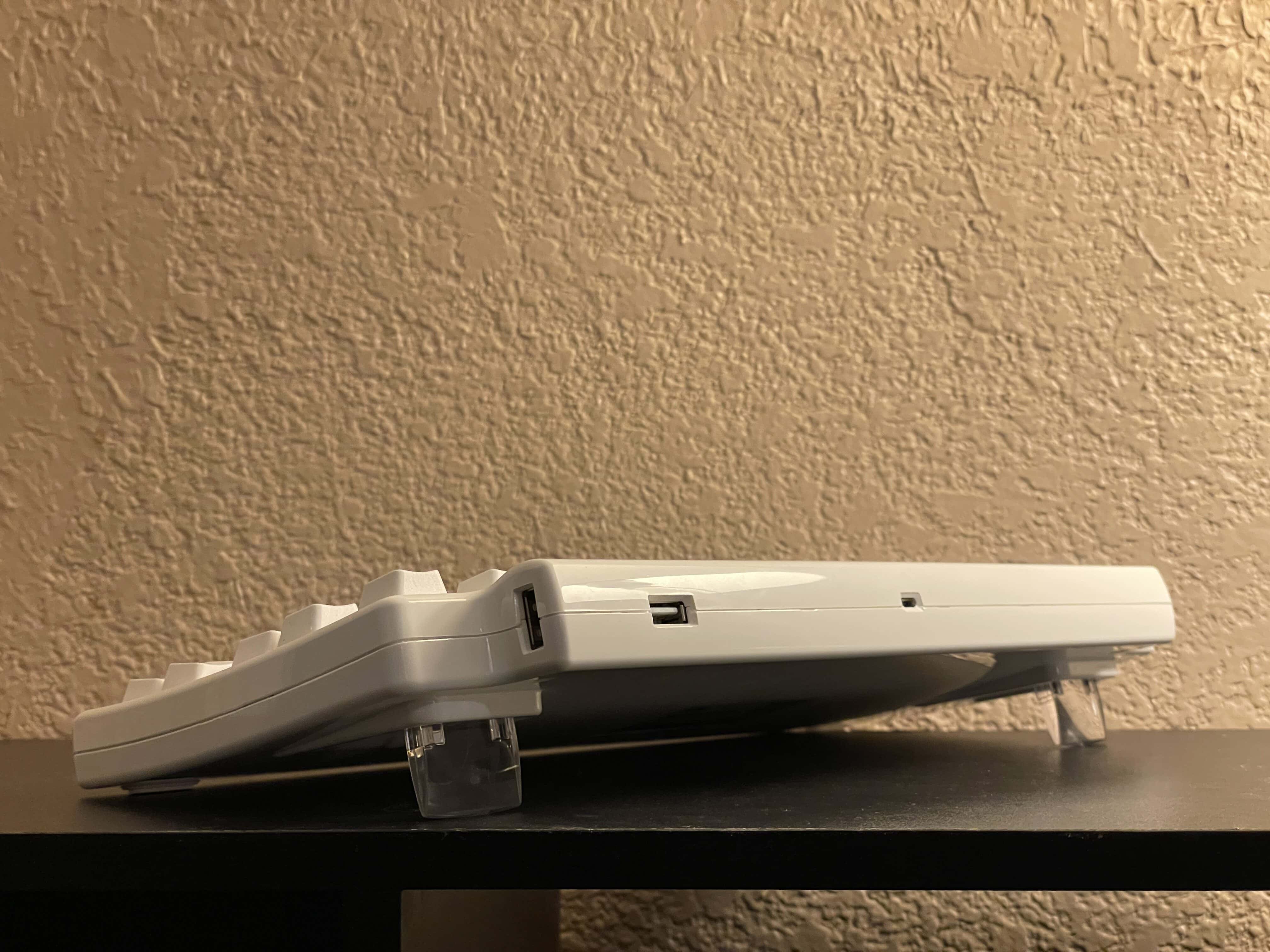
Photo: D. Griffin Jones/Cult of Mac
The keyboard case is made from sleek plastic that is perfectly smooth like a white plastic iMac or iPod. It looks really cool and feels nice in the hand. It’s a little heavy, so you know it’s expensive.
Under some lighting conditions, it looks like the key caps are a slightly different shade than the case, but it’s hard to tell if it’s just reflecting the beige walls in my office. The feet underneath are clear acrylic. They look great, and it’s a delightful detail in a place you’ll only look at once or twice. The feet are adjustable to any position, so if your surface is a little uneven, your keyboard won’t rock or wobble.
What’s it like to type on?
The keys are firmer than I expected but pleasant after I got used to it. The clicks themselves have a bit of a ‘pop’ to their sound, in a way that reminds me of the original Macintosh keyboard. It’s pleasant overall in a way that sneaks up on you, and suddenly slaps you in the face when you go back to the membrane keyboard on your MacBook.
It’s not an exact match to the Apple Extended Keyboard II. The biggest difference is the key travel — how far down you have to press the key. The Mini Tactile Pro has taller keys with more travel, which might feel like a jarring difference if you’re coming from any stock Apple keyboard, as most will.
Secondary to that, the key switch feels slightly different. The Matias keyboard has a little less crunch to it as the key bottoms out. It takes more force to type on this keyboard, but the end result is still pleasant.
Size and layout
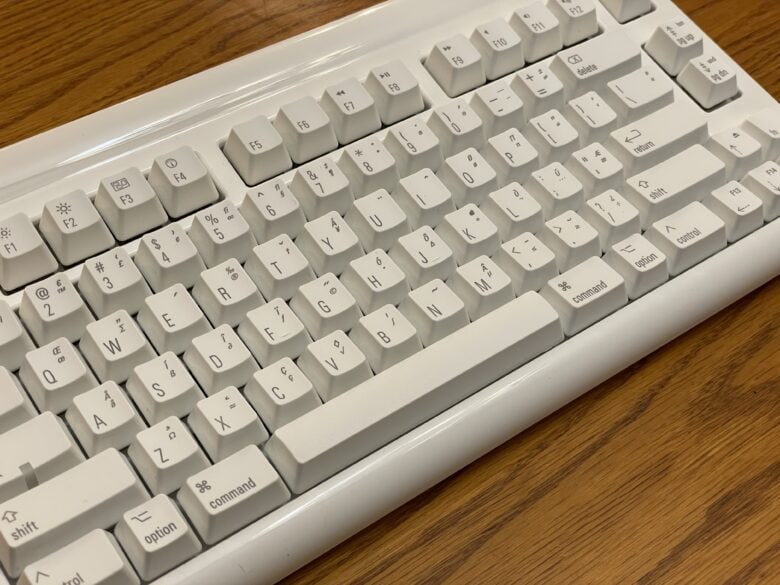
Photo: D. Griffin Jones/Cult of Mac
I was drawn in by the key switches, but I was sold by the key layout. It’s very clever. It’s slightly larger than a standard MacBook layout so that you get full-size arrow keys; Page Up, Page Down, Delete and Function; with a separate row for function keys.
You get all three modifier keys, Control, Option and Command, on both sides of the space bar in the correct order. There’s no weirdness with the Shift, Return or Backspace key — they’re full width.
Any color you want, as long as it’s white
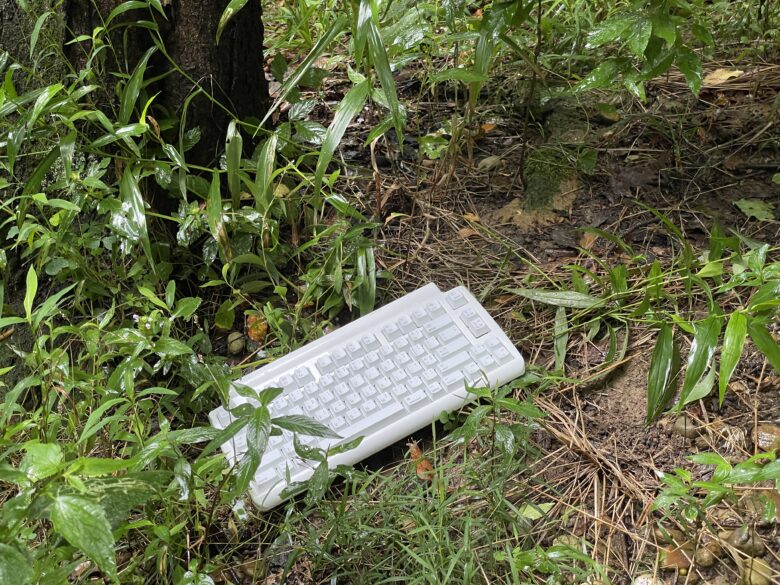
Photo: D. Griffin Jones/Cult of Mac
I’ll get my biggest qualm out of the way: the Mini Tactile Pro only comes in bright white. It looks good sitting under my silver MacBook Pro with my white Apple Cinema Display, and it would look fantastic paired with the new 24-inch iMac.
But a lot of potential customers have a Space Gray MacBook Pro or might soon be receiving a Midnight MacBook Air and use macOS in Dark Mode. It’ll look out of place in a setup like this.
However, Matias makes a similar model that comes in silver and black that might match your setup better, the Laptop Pro Keyboard. It comes with Bluetooth and costs a little bit extra. You can also order a set of key switches and build your own keyboard style.
The key caps
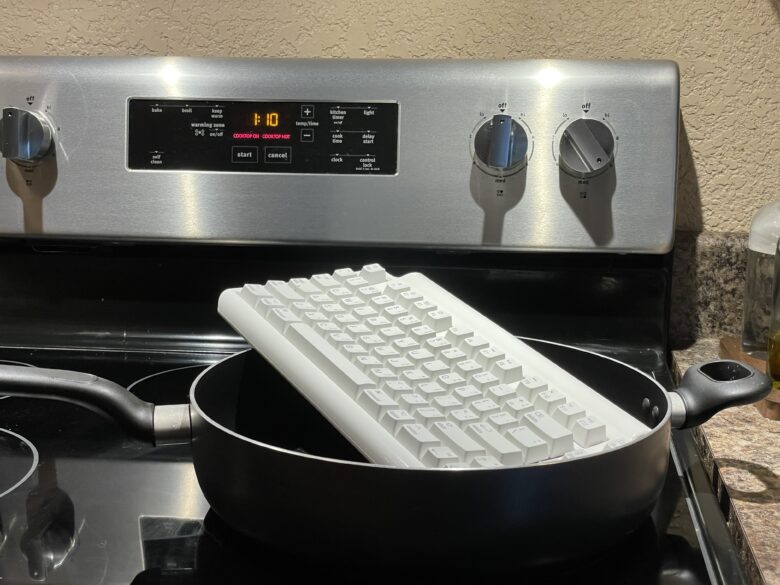
Photo: D. Griffin Jones/Cult of Mac
The key caps themselves are a bit polarizing. Every key is labeled by its letter or number, but they are also labeled with the Option+Key symbols and Shift+Option+Key symbols. This makes it easy to find characters that are hard to remember, like ™, € or £. It’s an easy reference if you don’t know that Option+4 types ¢ or that Shift+Option+K types or that Option+P types π, but it looks very cluttered.
Likewise, all of the modifier keys (Command, Shift, Delete, Escape and the rest) are labeled with both the name and the associated icon. The key caps are typeset in Univers, the same typeface that dominated Mac keyboards for much of its early life, although it’s unitalicized.
The Apple Extended Keyboard II, modernized
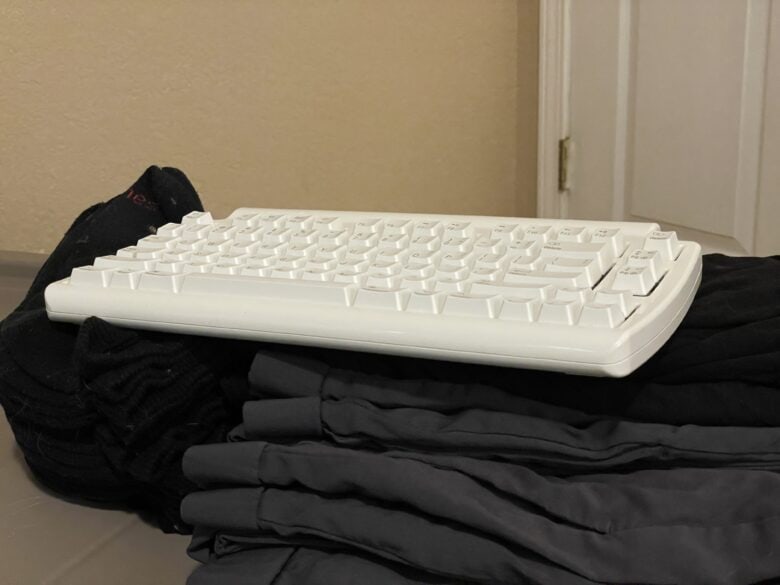
Photo: D. Griffin Jones/Cult of Mac
There are two remaining differences that will likely bother devout fans of the Apple Extended Keyboard II and no one else on the planet. The Caps Lock key doesn’t physically lock down; instead it has a green light to show it’s engaged. On the bright side, it’s a big, prominent light. The Apple keyboard has ridges on the D and K keys, where your middle fingers rest; the Matias keyboard has ridges on the F and J keys, where your pointer fingers rest. Both of these changes are in tune with modern keyboards, at the risk of horrifying purists.
Like Apple keyboards of the past, you get extra USB 2.0 ports on the left, right and rear. You won’t want to plug your external hard drive in here, but in a pinch it can charge your Apple Watch or cooling neck tie.
Unfortunately, Apple has not made Touch ID available to third-party manufacturers. If you want to keep Touch ID you’ll have to either tape your Touch ID keyboard underneath your desk or tear it down to a standalone button, but that’s true of every third-party keyboard.
Final Thoughts
In short, I was looking for a great mechanical keyboard with a compact layout without any compromises. The Matias Mini Tactile Pro fits the bill very well.
It trims off the number pad, but still offers the full suite of modifier keys and arrow keys. It has a comfortable typing experience. Its design learns from the best Apple keyboards of the past.
Unfortunately, the key caps are unsightly. I also wish it were a little slimmer — it’s a full inch thicker than my trackpad sitting next to it. These are small complaints that won’t bother most people.
Ultimately, it doesn’t type the same as the Apple Extended Keyboard II. It has too much key travel and the click isn’t quite right. But it’s still a great keyboard, all things considered, so I give it a hearty four stars.
★★★★☆
Pricing
Matias’s Mini Tactile Pro Keyboard for Mac is available for $129.95.
Buy from: Amazon
Matias provided Cult of Mac with a review unit for this article. See our reviews policy for more information, and check out more of our in-depth reviews. We originally published this review on August 1, 2022.
![The best keyboard Apple ever made, but smaller? [Review] The Matias keyboard on my desk. The Mac sits on the mStand next to an Apple Cinema Display and Magic Trackpad.](https://www.cultofmac.com/wp-content/uploads/2022/07/Matias-Mini-Tactile-Pro-on-Desk-1536x1152.jpg)

